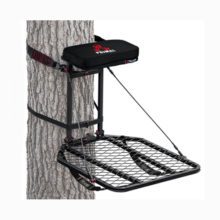- Camping/RV
Camping/RV
- Camping
- RV
- RV Storage & Organization
- Patio Mats & Step Rugs
- Chemicals & Cleaners
- RV Hardware
- RV Leveling & Stabilizing
- RV Water & Plumbing Supplies
- RV Power Center
- RV Roof Vents & Fans
- Covers & Protectors
- RV Awning, Screens & Accessories
- Spare Tire Covers
- Tire Protectors
- Air Conditioner Covers
- RV Security & Safety
- Camping
- Marine
Marine
- Hunting
Hunting
- Hunting Closeouts
- Crossbows
- Bolts/Broadheads
- Dog Training Supplies
- Traps and Accessories
- Food Plots
- Minerals/Attractants
- Scents & Scent Eliminators
- Game Cameras
- Blinds & Stands
- Shooting Accessories
- After the Shot
- Wellness Drinks
- Air Rifles & Accessories
- Feeders
- Garmin GPS & Radios
- Knives & Tools
- Optics
- Heaters
- Hunting Clothing
- Turkey Hunting
- Fishing
Fishing
- Clothing
Clothing
- Home/Cabin
Home/Cabin
- Grilling/Food Processing
Grilling/Food Processing
- Hardware
- Kayaks
- Camping/RV
- Camping
- RV
- RV Storage & Organization
- Patio Mats & Step Rugs
- Chemicals & Cleaners
- RV Hardware
- RV Leveling & Stabilizing
- RV Water & Plumbing Supplies
- RV Power Center
- RV Roof Vents & Fans
- Covers & Protectors
- RV Awning, Screens & Accessories
- Spare Tire Covers
- Tire Protectors
- Air Conditioner Covers
- RV Security & Safety
- Marine
- Hunting
- Hunting Closeouts
- Crossbows
- Bolts/Broadheads
- Dog Training Supplies
- Traps and Accessories
- Food Plots
- Minerals/Attractants
- Scents & Scent Eliminators
- Game Cameras
- Blinds & Stands
- Shooting Accessories
- After the Shot
- Wellness Drinks
- Air Rifles & Accessories
- Feeders
- Garmin GPS & Radios
- Knives & Tools
- Optics
- Heaters
- Hunting Clothing
- Turkey Hunting
- Fishing
- Clothing
- Home/Cabin
- Grilling/Food Processing
- Hardware
- Kayaks
Home » Shop » Hunting » Compound Bows » BOW ACCESSORIES » BEE STINGER SPORT HUNTER X-TREME 8″ COMPOUND BOW STABILIZER
BEE STINGER SPORT HUNTER X-TREME 8″ COMPOUND BOW STABILIZER
$59.99
REG $ 74.99 SAVE $ 15.00
Sometimes you only get one shot, so make it count with the Bee Stinger Sport Hunter Extreme helping you take aim! This stabilizer was specifically designed for superior stabilization while eliminating shot-induced vibration, resulting in the ultimate hunting stabilizer. Innovative technology like the Sims Internal Harmonic Dampener and De-Resonator combine to effectively minimize vibration transferred from the riser to the stabilizer upon release of the arrow. The individual 1 oz. end-weights allow users to customize their stabilizer to meet the ideal balance requirements of their particular hunting bow
Related products
-
Containing a real tarsal gland submerged in pure buck urine, Code Blue’s Tarsal Gland leaves a potent scent trail that signals to mature bucks that another dominant buck is in the area. Tarsal glands, found on the hind legs of deer, secrete a musk deer use to identify other deer and learn their status. Every deer has a unique rutting odor, typically deposited in scrapes when the buck rub-urinates during the peak rut. Code Blue has captured that unique rutting odor in every bottle of Code Blue Tarsal Gland.
-
Ideal Northern Edge Legume Mix is a long-lasting (3 to 5 years) perennial mix adapted to a wide range of soil and environmental conditions, including lighter soils that dry out quickly.
Each of the six components that make up the six components that make up this mix were selected for their persistence, high protein levels, mineral content, high digestibility and palatability.
Ideal Northern Edge Legume Mix will green up early in the spring and produce forage until a hard freeze occurs. It is recommended to mow or clip the plot whenever the alfalfa starts to bloom to generate new growth which deer love IDEAL
-
Primal Treestands Raven Hang On Treestand – Great minimal treestand made with quality materials and comfort in mind.
-
Coil Spring Traps are foot-hold restraining devices used to catch and hold wild animals. This style of trap has been in use since the early part of the 20th century and is widely accepted as a cost effective and efficient tool for managing wildlife populations.







